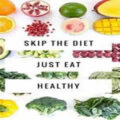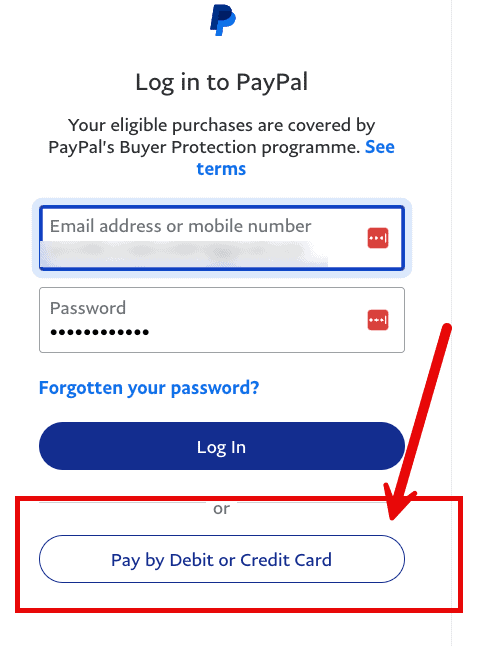Tutorials and interesting up-dates on healthy living through Thai Massage.
 As Autumn approaches, your thoughts turn to crunchy leaves underfoot, brisk hikes through brilliant red, orange, and yellow forests, kids in costumes, wool sweaters and scarves, Thanksgiving dinners, and soups simmering away on the stove. Oh, and pumpkins. Pumpkin everything. Pumpkin spice lattes. Jack-o-Lanterns. Pumpkin pie. Decorative pumpkins, culinary pumpkins, that Charlie Brown pumpkin movie. And yet pumpkins as a source of nutrition remain a bit of an after thought.
As Autumn approaches, your thoughts turn to crunchy leaves underfoot, brisk hikes through brilliant red, orange, and yellow forests, kids in costumes, wool sweaters and scarves, Thanksgiving dinners, and soups simmering away on the stove. Oh, and pumpkins. Pumpkin everything. Pumpkin spice lattes. Jack-o-Lanterns. Pumpkin pie. Decorative pumpkins, culinary pumpkins, that Charlie Brown pumpkin movie. And yet pumpkins as a source of nutrition remain a bit of an after thought.
People don’t really think to eat pumpkins unless it’s in pie or spice form. Few are making pumpkin soup, roasting pumpkin seeds, or sautéing pumpkin slices. But recall that pumpkins are an incredibly ancient American food that, as a member of the winter squash family, they formed one of the “Three Sisters” that many Amerindian populations used as staple crops, the other two being beans and corn.
Today, I’m going to explain the health benefits of eating pumpkin and its various products, including the flesh, the seeds, and the oil from its seeds. Yes, yes, pumpkin seeds are seeds, and pumpkin seed oil is a seed oil, which we normally try to avoid, but these are not industrial products. A pumpkin seed is obviously full of oil. You press it and oil comes out. No hexane or other industrial solvents required.
But I’m getting ahead of myself. More to come on that.
What Are the Benefits of Pumpkin?
Pumpkin is far lower in carbs and far higher in nutrients than you think.
A full cup and a half of pumpkin flesh has just 12.8 grams of digestible carbohydrates and under 70 calories, with around 3 grams of that can nourish and feed your . For that small dose of carbs and calories, you also get:
- Over 700 mg of potassium (notoriously hard to get in the modern diet)
- A huge amount of carotenoids
- 21% of your riboflavin requirements—which we need to metabolize nutrients and generate cellular energy
- 35% of your copper requirements
- A nice healthy dose of manganese, vitamin C, vitamin B5, and vitamin E
- Numerous polyphenols, which provide a to our antioxidant system
Pumpkin offers a quick and easy way to get loads of nutrients, including ones many low-carb, keto, or otherwise carnivorous eaters have trouble getting, like potassium, manganese, and vitamin C, without incurring a big carb or calorie load.
Other winter squashes are just as good, if not even better.
A cup and a half of cubed butternut squash flesh:
- 123 calories
- 22 grams digestible carbs, 10 grams fiber
- 18% of daily thiamine, 19% of niacin, 22% of B5, 22% of B6, 15% folate, 52% vitamin C
- Tons of carotenoids
- 22% of daily magnesium, 23% of manganese, 22% copper, 19% (873 mg) potassium
- Polyphenols
- Very low in carbs for what you get, right?
A cup and a half of cubed acorn squash:
- 170 calories
- 31 grams of digestible carbs, 13.5 grams of fiber
- 43% of daily thiamine, 17% of niacin, 31% B5, 35% B6, 15% folate
- 29% copper, 31% magnesium, 32% manganese, 29% potassium
- Polyphenols
Somewhat more starchy, but not much. Most diets can handle 30 grams of carbs. And the nutrient density is incredible.
There isn’t much research into pumpkin flesh eaters. But that’s okay, because we can look at the nutritional facts and know including all those micronutrients in our diets will have positive effects.
Most of the research is on pumpkin seeds. What does it say about pumpkin seeds?
Pumpkin seeds are extremely high in magnesium and other minerals.
For just an ounce of pumpkin seeds, you get 155 mg of magnesium (nearly half your daily requirement), 1.3 mg of manganese (over half your requirement), 40% of your copper, and 20% of your zinc. That’s for 5.5 grams of omega-6 fats, 4.5 grams of monounsaturated fat, and 2.4 grams of saturated fat. Omega-6 linoleic acid isn’t nearly as problematic in whole foods as it is in refined, industrial seed oils or fast food fryers—and 5.5 grams isn’t that much.
Pumpkin seeds could lower blood glucose.
The seeds have been shown to reduce postprandial blood glucose when consumed as part of a meal. The same meal using flax instead of pumpkin seeds had no such beneficial effect on blood glucose, despite flax being far higher in fiber (which supposedly improves glucose control). Further analysis has identified several components of pumpkin seeds, including inositol, nicotinic acid, and trigonelline, as responsible for the hypoglycemic effects.
Pumpkin seeds may help men with benign prostatic hyperplasia.
Benign prostatic hyperplasia is benign in that the enlargement of the prostate gland isn’t cancerous but it’s non-benign in that it can impede the flow of urine. In one placebo-controlled trial, a pumpkin seed extract improved the symptoms of men with benign prostatic hyperplasia. Those who took the extract (but not the placebo) for a year reported better symptoms. Another study had similar results using a fat-free pumpkin seed extract, finding that the supplement reduced nighttime urination.
Pumpkin seeds may improve erectile function, if they’re roasted.
Albeit in rats, the consumption of roasted (but not raw) pumpkin seeds improves biomarkers associated with erectile function. PDE-5 levels (the same thing that Cialis and Viagra target) improved, MDA (a marker of lipid oxidation and general inflammation) improved, as did nitric oxide levels. You aren’t rats, and this didn’t actually measure erectile outcomes, but it’s promising.
Pumpkin seeds lower the risk of urinary stones despite containing oxalates.
I’ve seen some people worry about the oxalate content of pumpkin seeds. After all, most seeds contain oxalates—they are a form of “antinutrient” that plant use for their own protection—and pumpkin seeds should be no different. It turns out that eating pumpkin seeds actually lowers the calcium-oxalate crystal occurrence in the urine.
Pumpkin seeds fixed one man’s depression.
I read a single case study on the power of pumpkin seeds found in an old letter to the editor of a medical journal. A patient who’d been maintaining his mental health for years using 1.5 grams of L-tryptophan was suddenly plunged into deep depression when L-tryptophan was pulled from the shelves. After lots of research, his doctor (the author of the letter) realized that 200 grams of pumpkin seeds was the most cost effective source of L-tryptophan. He ate the seeds and the depression lifted.
What about the Phytic Acid?
Now, pumpkin seeds are still seeds. They do contain phytic acid, which can have undesirable effects on calcium and other mineral absorption. But there’s another side to phytic acid—it seems to enhance anti-cancer cell activity. And if you have the right gut bacteria, you can degrade phytic acid into inositol, a compound with many benefits including blood sugar and mood regulation.
If you want to mitigate or eliminate some of the phytic acid, there are things you can do:
- You can always roast or sprout your pumpkin seeds to degrade some of the phytic acid.
- You can consume vitamin C with your pumpkin seeds to counter some of the effects on mineral absorption.
- You can consume meat alongside the seeds; this improves mineral absorption.
But if you’re interested in boosting your intake of magnesium and manganese and perhaps enjoying some of the other benefits I listed, an ounce of pumpkin seeds is a great option that shouldn’t cause any problems for you.
Pumpkin flesh (and that of other winter squash) is definitely worth incorporating into your diet.
So, I’d love to hear from you. What’s your favorite way to eat pumpkin? Do you roast the seeds? Ever notice any of the benefits listed above?
Take care, everyone.
(function($) {
$(“#dfbLgLi”).load(“https://www.marksdailyapple.com/wp-admin/admin-ajax.php?action=dfads_ajax_load_ads&groups=674&limit=1&orderby=random&order=ASC&container_id=&container_html=none&container_class=&ad_html=div&ad_class=&callback_function=&return_javascript=0&_block_id=dfbLgLi” );
})( jQuery );
References
- [ref]
Pumpkin seeds are stable when roasted or heat processed.
One pitfall of linoleic acid-rich foods is that the polyunsaturated fat is fragile in the presence of heat, opening the fat up to oxidation during the cooking process or in the body. Pumpkin seeds, however, contain polyphenols that seem to protect the fat from oxidizing during heating. In fact one study found that roasting pumpkin seeds increased the oxidative stability of the pumpkin seed oil.[ref]
The post appeared first on .
The above article The Benefits of Pumpkin and Pumpkin Seeds was first published on this site.
We trust that you found the article above of help or of interest. You can find similar content on our blog thaimassagegreenock.co.uk.
Please let me have your feedback in the comments section below.
Let us know which subjects we should cover for you next.
Thai Massage Newsletter
To make sure you don’t miss out on any new posts or promotions that we introduce, sign up for our newsletter.
Once a month we run a special promotion for our newsletter members, so sign up now to make sure you don’t miss out.
It’s free and full of great health and nutrition tips and advice on how we can help you achieve your health and fitness goals.





